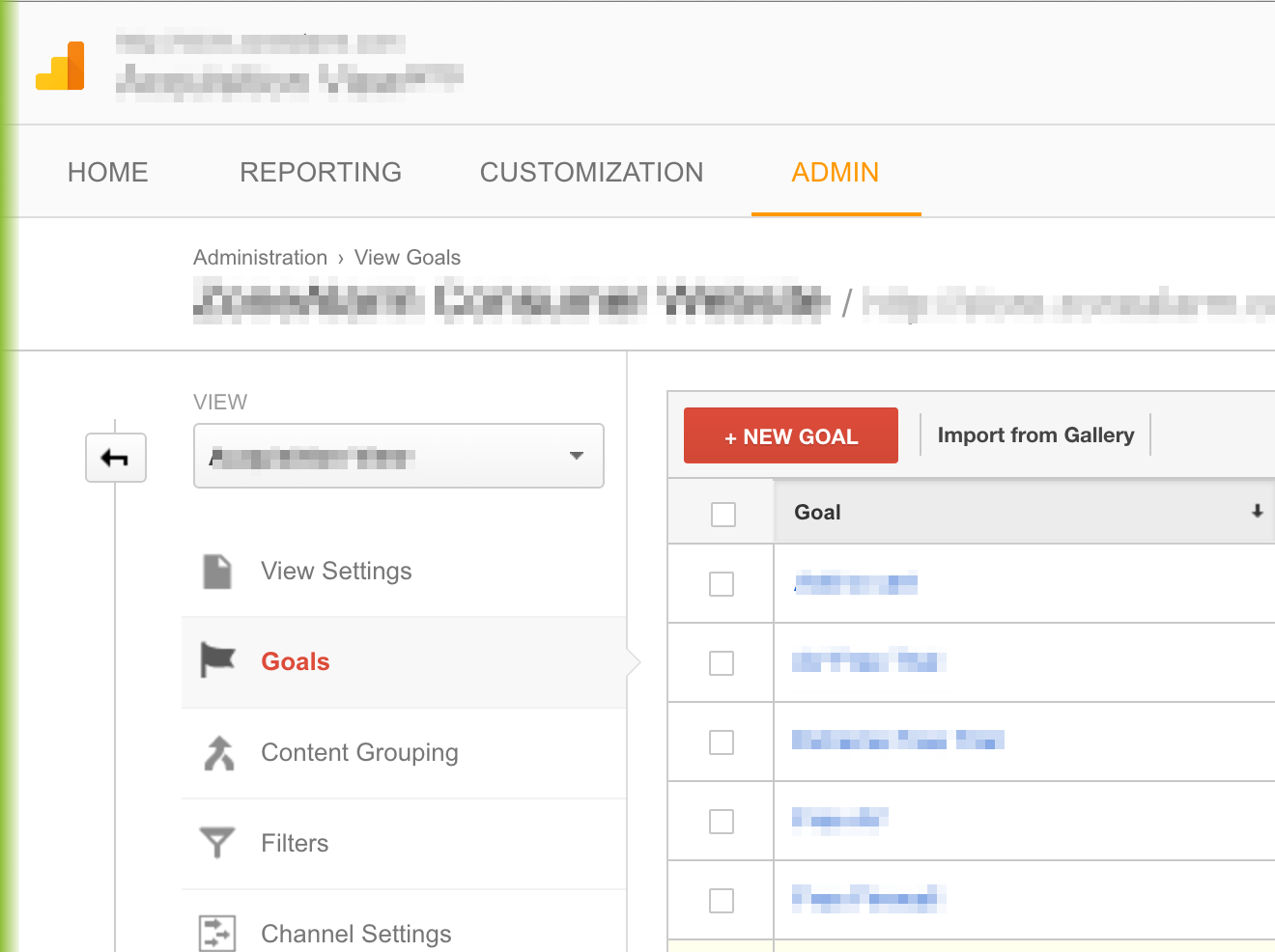What Data Is Google Analytics Goals Unable to Track: Discover the Limitations
What Data Is Google Analytics Goals Unable to Track: Discover the Limitations
Blog Article
Discover the Limitations of Google Analytics Goals: Unveiling the Information Types That Remain Untrackable
As companies significantly rely on data-driven decision-making, comprehending the limitations of tools like Google Analytics becomes vital. While Google Analytics Goals deal valuable insights into user interactions, there exist data types that elude monitoring, presenting difficulties to an extensive understanding of customer habits.
Insufficient Customer Trip Tracking
Insufficient customer trip monitoring within Google Analytics can hinder the capacity to properly assess individual habits. When the customer journey is not fully tracked, there are spaces in the information that protect against a thorough understanding of just how customers connect with a site. This absence of understanding can cause missed out on chances for optimization and enhancements to the user experience.
One usual problem with incomplete individual trip monitoring is the inability to see the complete path that customers take before finishing a goal or leaving the website. Without this info, it is testing to identify where customers might be running into barriers or friction points that avoid them from converting. Furthermore, insufficient monitoring can cover the influence of certain advertising initiatives or site adjustments on user habits.
To resolve this limitation, it is important to set up correct monitoring mechanisms within Google Analytics to record the entire customer journey. This might involve setting up occasion tracking, objective funnels, or using tools like Google Tag Supervisor to guarantee that no important interactions go unrecorded. By getting a thorough view of the customer journey, internet site owners can make even more informed decisions to boost user involvement and drive conversions.
Attribution Difficulties
Browsing through attribution obstacles in Google Analytics needs an extensive understanding of exactly how various touchpoints add to the overall conversion procedure. Acknowledgment obstacles emerge from the intricacy of modern-day client trips, where users engage with numerous networks before converting.
One usual acknowledgment challenge is the difficulty in attributing conversions to the appropriate source, particularly in instances where individuals interact with several channels before converting. Furthermore, cross-device tracking positions an additional acknowledgment challenge, as individuals typically change in between gadgets during their journey, making it testing to track their interactions flawlessly.
Offline Conversions
Provided the difficulties related to attributing conversions accurately in online networks, the measurement of offline conversions offers a substantial opportunity for online marketers looking for a more thorough understanding of their clients' journey. Offline conversions refer to actions that customers absorb the physical globe, such as making acquisitions in brick-and-mortar stores or over the phone, participating in occasions, or involving with published materials - what data is google analytics goals unable to track. These conversions are critical for companies that run both online and offline, as they provide important insights into the performance of marketing campaigns throughout different touchpoints
Tracking offline conversions generally positioned a significant difficulty for marketers, as it was challenging to attach these actions back to specific online communications precisely. Nonetheless, with advancements in innovation, such as the combination of CRM systems, distinct identifiers, and coupon codes, companies can currently connect the space in between online and offline information to get a more alternative sight of client behavior. By successfully determining offline conversions, marketing experts can optimize their strategies, assign sources extra successfully, and inevitably improve the overall customer experience.
Cross-Device Tracking
Cross-device monitoring plays an important function in understanding the interconnected nature of consumers' electronic interactions throughout multiple gadgets. In today's omnichannel world, where customers perfectly change in between desktop computers, smartphones, and tablets, tracking their habits throughout these gadgets is necessary for online marketers to obtain a comprehensive sight of their customer trip.

Furthermore, privacy problems and regulations such as GDPR and CCPA have additionally difficult cross-device tracking. With users demanding even more control over their data and increased restrictions on monitoring modern technologies, online marketers need to discover privacy-compliant and cutting-edge means to connect user communications across tools.
Dynamic Content Engagement
Comprehending customer engagement with dynamic material is critical in enhancing digital advertising techniques for boosted target market communication. Dynamic web content describes site aspects that transform based upon customer actions, preferences, or other elements, using a customized experience. Nonetheless, tracking individual communications with vibrant content poses challenges for traditional analytics devices like Google Analytics.
While Google Analytics can track fundamental interactions like clicks and web page sights, it might have a hard time to record even more nuanced engagements within dynamic web content. what data is google analytics goals unable to track. Metrics such as time invested in details vibrant elements, float activities, or communications within pop-ups are often not conveniently quantifiable making use of conventional monitoring approaches. This restriction impedes online marketers' capacity to fully comprehend exactly how users are involving with dynamic content and customize their techniques as necessary

Conclusion
To conclude, Google Analytics objectives have limitations in tracking incomplete user journeys, connecting conversions accurately, capturing offline conversions, tracking cross-device interactions, and determining dynamic web content engagement. These restrictions highlight the value of exploring additional monitoring techniques and tools to gain a much more detailed understanding of individual habits and conversions beyond what Google Analytics can offer.
While Google Analytics Goals deal useful insights right into customer interactions, there exist data kinds that thwart tracking, positioning challenges to a comprehensive understanding of customer behavior.Incomplete customer trip monitoring within Google Analytics can impede the capability to accurately assess customer behavior. When the customer journey is not totally tracked, there are gaps in the data that avoid a detailed understanding of just how users interact with a web site.One common problem with incomplete user journey monitoring is the inability to see the full path that customers take in the past completing an objective or leaving the website. By gaining a detailed sight of the customer trip, web site owners can make more enlightened choices to boost individual engagement and drive conversions.
Report this page